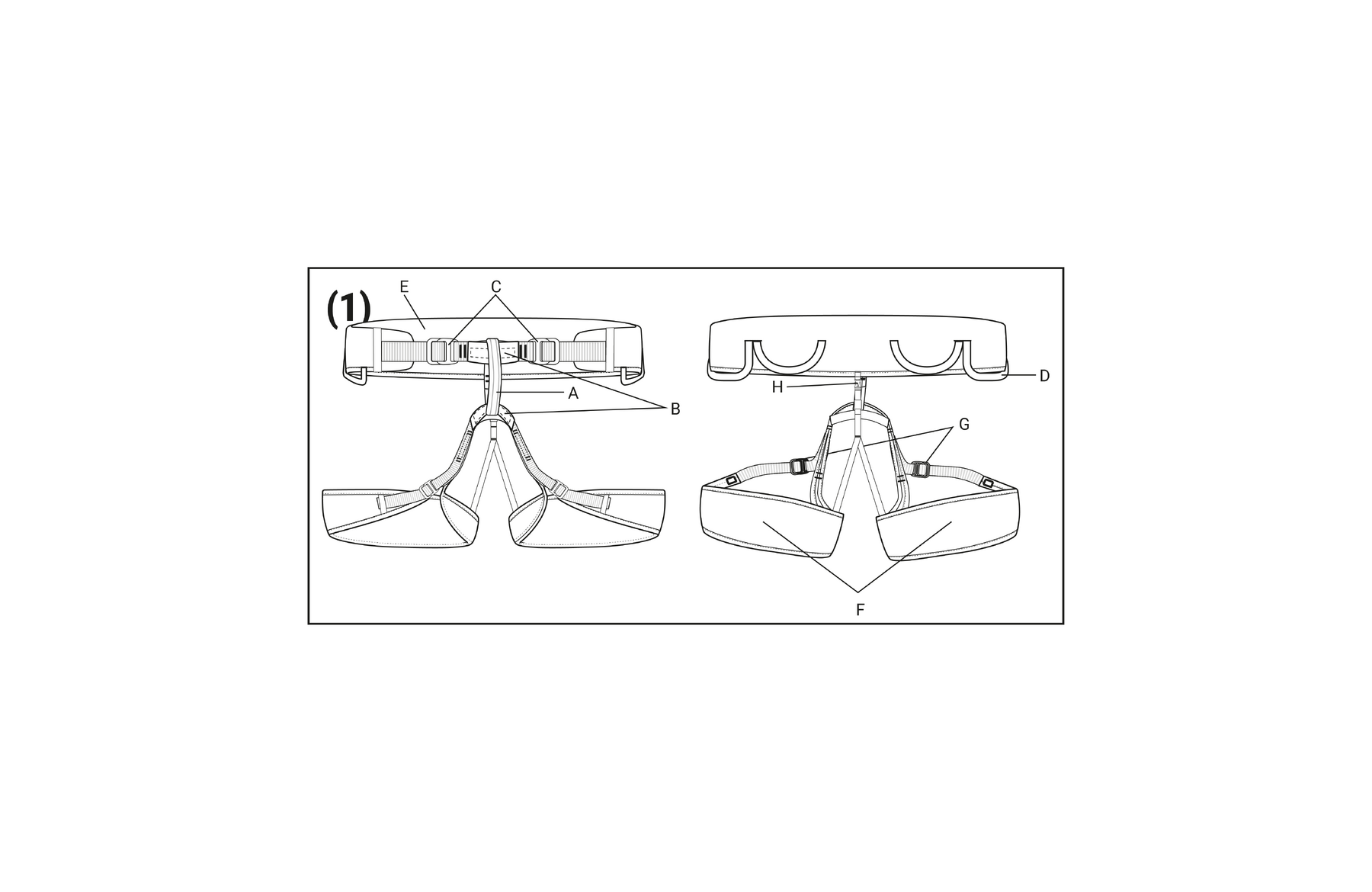Before and after each use, check the condition of your harness:
- Verify the absence of abrasion, burns, and/or cuts on the webbing and stitching of the belay loop, tie-in points, and the harness as a whole. The tie-in points feature a wear indicator. The appearance of red textile signals the end of life of the reinforcement portion (illustration #8). In this case, the harness must be discarded. Be cautious, as humidity or freezing conditions make the harness more susceptible to abrasion; take extra precautions.
- Check that the self-locking buckles do not exhibit cracks, deformations, corrosion, wear, or any other damage, and ensure their proper operation. If you have doubts about the condition of your equipment or if it is defective, destroy it to ensure it is not used further. A thorough inspection should be carried out at least once a year by a trained individual. After a significant fall, your equipment, as well as other components of the belay chain, should be destroyed. User safety depends on maintaining the efficiency and strength of the product.














